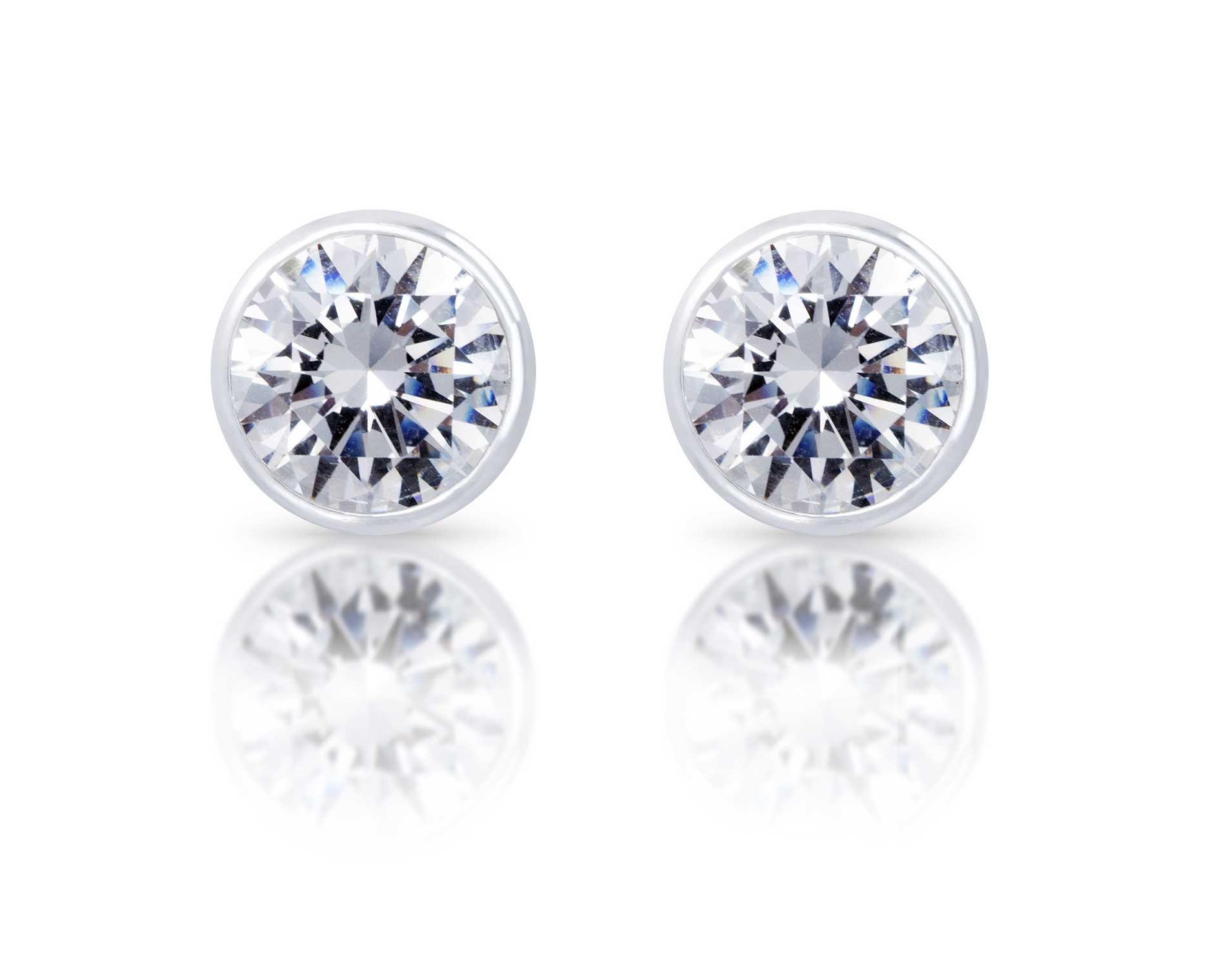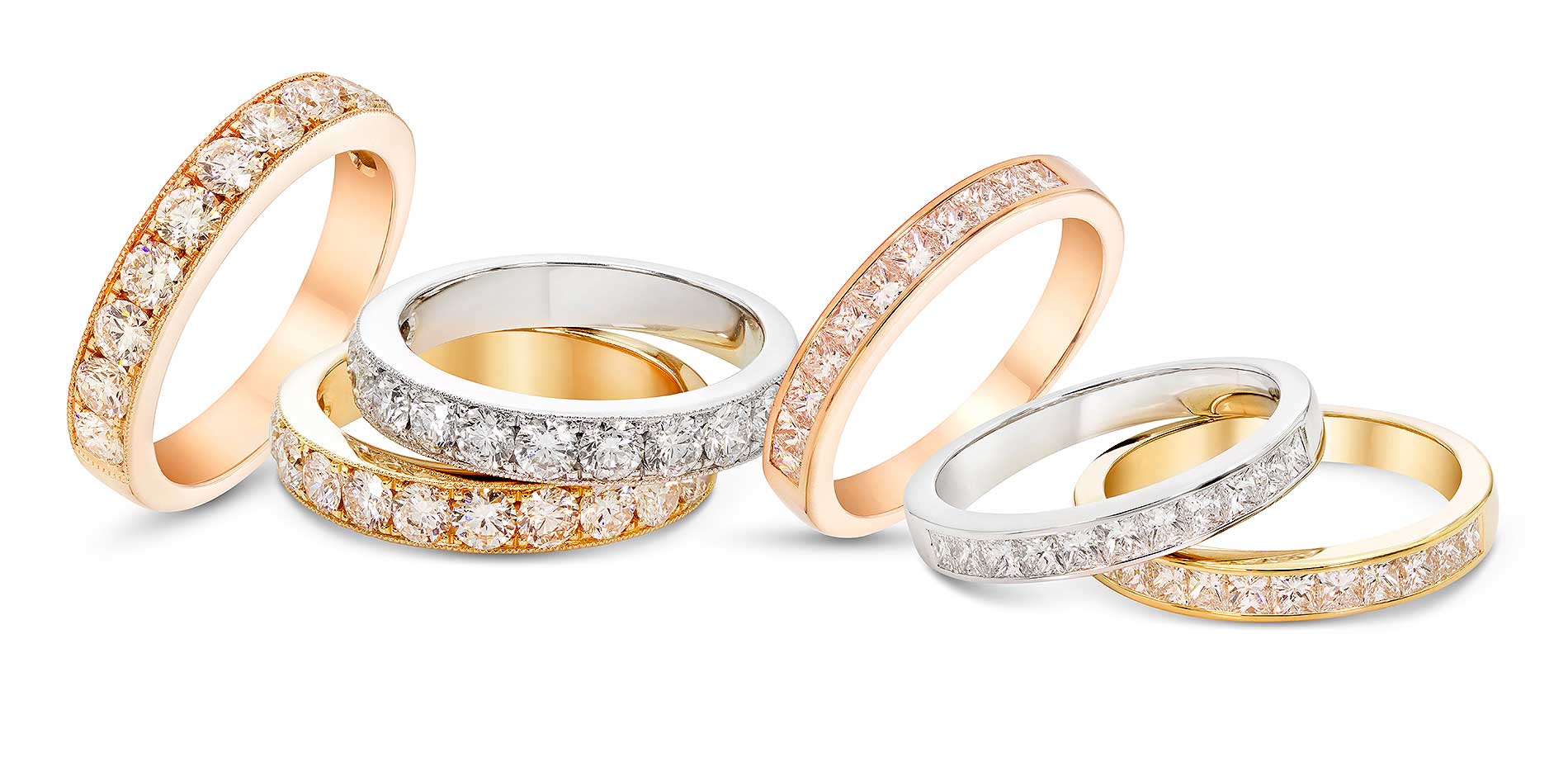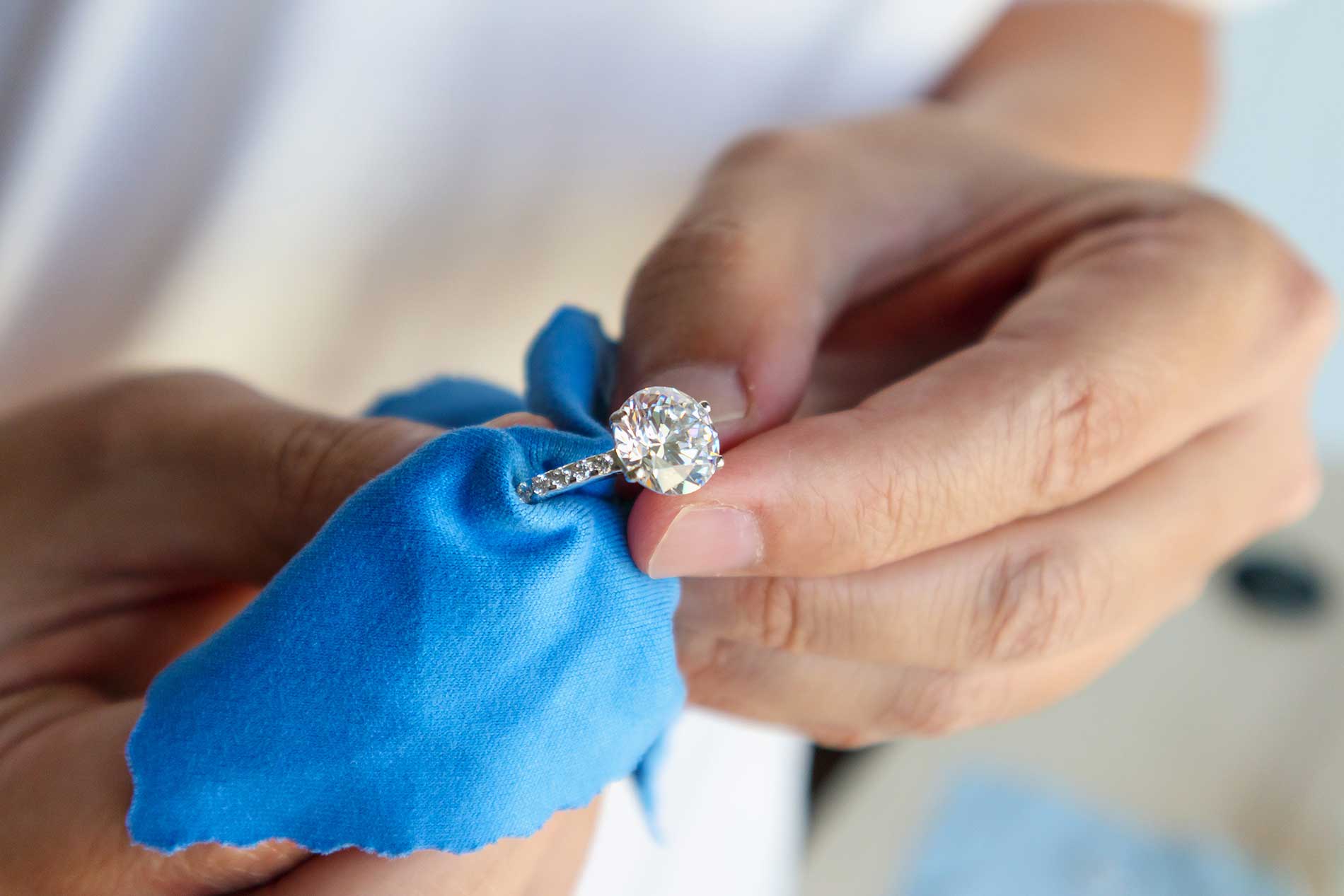
If you are not familiar with diamond structure and composition, You may think that a gemstone is a diamond but it is an entirely different stone For example, Cubic Zirconia or Moissanite. This is why knowing how to spot fake diamonds is essential.A diamond expert has the proper experience and tools to determine whether a diamond is genuine or fake. Although this guide is useful and practical, no single test at home should be considered definitive. So you can visit a diamond specialist.
Here are some tests to check diamonds
- Water test
- Fog test
- Check setting and mount
- Heat the stone and see if it shatters
- UV light test
- News paper/’Read-Through’ Effect
- The Dot test
- Sparkle test
- Inspecting a Diamond with a loupe
- Using A thermal Conductivity prove ( aka “The Diamond Tester)
- Testing a Real Diamond With High Profile Weighing
- Spot a Fake Diamond Using Electricity Conductivity.
- Examining Using a Microscope
- X-ray Examination
1)Water Test
Find a normal-sized drinking glass and fill it ¾ way with water. Carefully drop the loose stones into the glass. If the stone sinks, it is a genuine diamond. If it floats under the water or on the surface, you have a fake diamond on your hands. A real diamond has a higher density, so the water test shows whether your stone matches this level of density.
2) Fog Test
To test the Fog, hold the diamond or ring between two fingers and breathe in a puff of air. The moisture and heat of your breath will cause a light haze to form on the diamond. If the fog dissipates immediately, the diamond is genuine. If it takes a few seconds for the fog to clear, it's probably a fake diamond. Diamond conducts heat effectively and therefore dissipates heat faster.
3) Check Setting & Mount
If a diamond has already been set in a ring, look at the setting and type of mount used. Due to the large price tag of a diamond, a genuine one will only be set in high-end jewelry. For example, a genuine diamond will be set in materials such as white gold, platinum, yellow gold, pave or side-stone settings, and the halo setting rings. To see if the setting is true as described, look inside the center of the ring for the marks. For example, notes 10K, 14K, and 18K indicate the type of gold used. The symbols PT and PLAT denote platinum. Those symbols indicate platinum or gold if you see a number like 585, 770, 900, and 950. If you see a "C.Z" stamped or engraved, the gemstone is cubic zirconia and not a natural diamond.
4) Heat the Stone and See if it Shatters
Diamonds are made of incredibly strong material and will not react to high heat.To test whether a diamond is genuine using heat, take a drinking glass and fill it with cold water. Use plyers or a set of fireproof gloves to hold the stone. Heat the stone with a lighter for about 40 seconds, then drop the stone directly into cold water.If the stone breaks, it is made of weak material and is not a real diamond. A real diamond will not react.Heat testing tests the quality and strength of the stone. Due to the rapid expansion and contraction of heat, weak materials such as glass or dense zirconium will crack and break.Think of a glass or pyrex dish that you use for cooking. If you pull the dish out of a hot oven and immediately try to wash it, the shock of the temperature change can break the dish.Because diamond is one of the strongest materials on the planet, it will be resistant to such heat tests.Heat will dissipate quickly and diamonds will not be affected by temperature changes.
5) UV Light Test
To test if a diamond is real in a different way, put it under a UV light and watch the reaction. Most diamonds will emit a bluish tint, but not all of them. Some diamonds do not glow in ultraviolet light. Because of this, if the stone doesn't sparkle, the results don't necessarily indicate that it's a fake diamond. Since this test is not specific, it is best to have a diamond expert or jeweler use their advanced equipment to examine the stone.
6) Newspaper/‘Read-Through’ Effect
To test a diamond's refraction, gently place the flat side of the stone on a sheet of newspaper in an area with lots of letters. Make sure the light is bright and that no objects or people cast shadows on the diamond. If you are able to read the letters in the newspaper - even if the letters are a little blurry - the diamond is fake. If the diamond were real, its facets would refract light in different directions rather than in straight lines. Because of this refraction of light, you cannot see clearly through the diamond and make out the letters on the paper. The newspaper test is used most effectively on loose diamonds. If the diamond is already in its setting, consider having it reviewed using a hazing test or by a diamond expert.
7) The Dot Test
If you don't have a newspaper to use, the dot test is an excellent option. Place a piece of white paper on a flat surface and draw a tiny dot with a pen. Place the stone on top of the point with the flat side down. With the pointed end of the diamond, look at the paper. If you see a round reflection inside the gemstone, the stone is fake. If you do not see dots or reflections in the stone, the diamond is genuine. Because a real diamond has strong refractive qualities, the light will bounce in different directions rather than in a straight line. Because of this, you will not be able to see letters or dots through a natural, real diamond.
8) Sparkle Test
The sparkle test requires no equipment except your eyes.Hold the diamond in question under a simple lamp.Watch how light reflects off the stone.Can you see the brilliant shimmer of white light reflecting off the diamond?Do you see colored light reflections?A true diamond reflects white light extremely well, giving off an exceptional sparkle.Diamonds also reflect colored light, or fire, in spectacular fashion.If you compare a real diamond to a fake diamond like cubic zirconia, you will notice a stark difference between the white and colored light that the real diamond emits.
9) Inspecting a Diamond with a Loupe
A diamond professional will have access to a loupe – a special magnifying glass used for viewing diamonds, gemstones, and jewelry. When using a loop, a professional will look for spots and imperfections in the diamond. Although a fake diamond can be made to perfection, a diamond will have small imperfections that are included.
10) Using A Thermal Conductivity Probe (aka “The Diamond Tester”)
In addition to a loop, gemologists typically have a thermal conductivity probe or meter. They will use this tool to determine a gemstone's thermal conductivity. Since diamonds are effective heat conductors, diamonds will dissipate heat quickly after being heated. If the gemstone dissipates heat slowly, the diamond is not genuine. It's worth noting that synthetic moissanite stones often have the same or equal thermal diffusivity as real diamonds—making this test invalid with moissanite. There are many diamond testers available, so you can choose the one you like the most.
11) Testing a Real Diamond with High Profile Weighing
Jewelers and gemologists usually have a very finely-tuned scale to measure small differences in weight. A real diamond will weigh less than a fake stone like cubic zirconia—but only a special scale for carat weight will be able to detect these minute differences. To perform the test, choose a fake diamond that is roughly the same shape and size. Use this stone as a comparison to any other diamond you are considering.
12) Spot a Fake Diamond Using Electricity Conductivity
Identifying fake diamonds can also be achieved through an electrical conductivity test performed by a jeweler or gemologist. Diamonds conduct electricity better than other stones, including hard synthetic moissanite. An electricity tester will provide a clear indication of whether the stone is genuine or lab-made. A diamond will show conductivity whereas other stones such as moissanite and cubic zirconia will not.
13) Examining Using a Microscope
With 1200x magnification on a power microscope, a gemmologist or jeweler is able to examine the stone in detail.At this level of magnification, they can see real diamond inclusions and smaller differences compared to moissanite.
14) Get An X-Ray Examination
To review a stone's internal, molecular qualities, send it to a professional diamond lab for testing. Their X-ray machines will be able to tell whether a diamond has a radioactive molecular structure or a radiopaque molecular structure. Diamonds are radioactive and imitations such as cubic zirconium and crystal have more radiopaque properties.
How To Spot Other Stones That Aren’t Real Diamonds
With the increasing popularity of other gemstones, here are some steps to spotting a stone that can look like a real diamond to the naked eye.
How to Recognize Synthetic Diamonds
With the increasing prevalence of synthetic diamonds, it is important to know how to tell the difference between a lab-created diamond and a natural diamond. Synthetic diamonds have the same chemical and molecular composition as real, natural diamonds. Due to their complex intrinsic qualities, we recommend having the diamond reviewed by an expert. They can run conductivity tests and look at the rock under high magnification. Even when it is unclear to the naked eye how a synthetic diamond differs from a natural diamond, it is important for resale and insurance standards.
How to Recognize Cubic Zirconia
A cubic zirconia is one of the easiest fake diamonds to check for authenticity. Using the Sparkle Test, for example, it is relatively easy to measure the amount of spark and fire a stone will have. In addition, the cubic zirconias reflect orange-tinted light. They weigh more than a real diamond and usually don't have flaws or inclusions. Real diamonds will have inclusions that cannot be seen naked under a diamond expert's microscope.
How to Recognize White Sapphire
Sapphires are usually found in a wide range of colors, including blue and white, which are visible to the naked eye.White sapphires are often posed as diamonds but do not provide the signature sparkle and contrast of dark and light areas of diamonds.If the stone seems more opaque in coloration—meaning it doesn't have distinct light and dark areas—it may be a white sapphire.
How to Recognize Moissanite
Perhaps the best performer in the fake diamond world is synthetic moissanite. Differentiating between the two is usually difficult for the naked eye and requires the skills of a diamond professional. An electrical conductivity test will indicate if the gemstone is a moissanite or a true diamond. Note that the thermal conductivity test is not a valid technique for identifying moissanite because they have almost identical thermal conductivity to diamond.
How to Recognize White Topaz
Although a white topaz may look like a diamond at first glance, there are several features that distinguish it from a real diamond. The exterior is softer than diamond and can be scratched easily by other materials. You can take a closer look at a white topaz using magnification to see if there are any scratches on the surface. Due to its durable composition, the diamond will not scratch.
Conclusion
Many of the tests in this guide, such as the fog test and the thermal conductivity test, can help determine if a diamond is genuine. But due to the number and complexity of synthetic gemstone materials, we recommend consulting with a diamond expert or jeweler to review the pieces you already have at home. These experts are trained to know how to recognize a fake diamond. If you use our diamond education or diamond experts to buy a diamond, you will never have a problem knowing if it is real. Any diamond you buy will come with a valid GIA or AGS certificate, and all you have to do is make sure the diamond matches the certificate.



